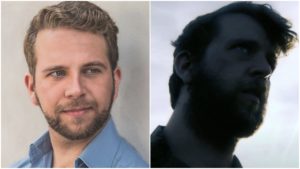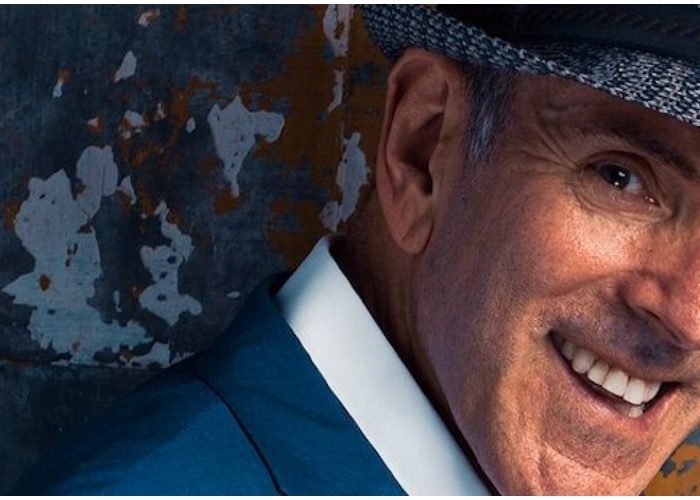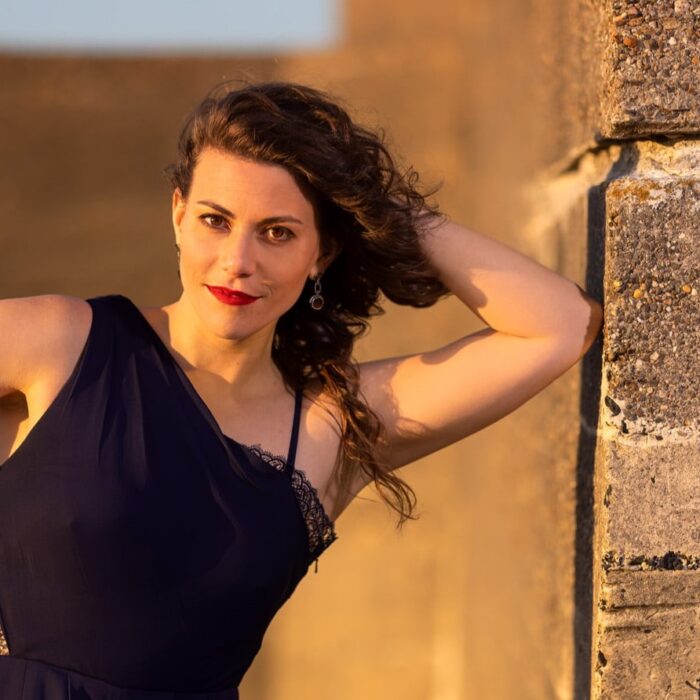
Q & A: Baritone Johnathan McCullough on Starring & Directing the Film Version of ‘Soldier Songs’
By David SalazarThere’s no doubt what video productions have meant for the opera world over the last year. With COVID-19 continuing to rage, live performance is simply not an option at this moment and will struggle to become the norm once again for some time.
In its stead, companies have turned to the magic of cinema and streaming options available for distribution. At first, it seemed that companies would turn to older recordings with some finding ways to create Zoom videos and others still tapping into more cinematic approaches. And as the year has unfolded, the possibilities have slowly revealed themselves to be all the more potent.
“Soldier Songs,” which is being released on Friday via Opera Philadelphia’s online digital platform, fits in with this latter group of operatic films. Filmed on an Arri Alexa Mini (a camera used on many major Hollywood productions) and featuring some stunning visuals and editing, one might be tempted to go so far as to say that “Soldier Songs” is really pushing the envelope and challenging the opera world with what is truly possible.
Throw in the fact that it was directed by a first-time filmmaker who also stars in the picture, and you have an astounding must-see package. OperaWire recently spoke with baritone Johnathan McCullough about making his directorial debut, directing himself, and the amazing collaborators that helped bring his vision to life.
OperaWire: What does “Soldier Songs” mean to you and what do you hope that audiences take away from it?
Johnathan McCullough: For me, “Soldier Songs” is a way to bring awareness to the trauma and mental distress that so many veterans in our country experience. One of my goals for this piece is that by telling this story, it will help destigmatize mental illness and give the audience some insight into what life can be like for those with a history of trauma. I hope that people who are suffering reach out and know that getting help is not a sign of weakness and that those who are not suffering look at how they perceive mental health.
OW: How did this project end up as a film? Obviously, the COVID pandemic forced the staged production to shift to a digital presentation, but why a film? Was it your immediate thoughts?
JM: Back in the Summer of 2019 my original idea was designed in a way where the set pieces could be stored in a trailer and toured around the country. Once COVID hit, it crossed our minds to mount the production outside somewhere since it could be done in a socially distant way.
Once we got into the logistics of it, we realized that safety was still a concern, not to mention it would be getting quite cold to do an outdoor production by the time we were ready to go, so we shifted to the idea of creating digital content. We set up how we would shoot the staged production at a local theater and as we were looking at how to get the desired look for the background, which was a desolate area with rolling plains and a vast sky, the opera company said, “Let’s just film it outside.”
This came with multiple benefits. We could now have the perfect background for the trailer and have more people on set who could work in a socially distanced way and outside, keeping everyone safe. I’m thrilled to have had the opportunity to make this piece into a film because it gave us the opportunity to explore opera in a new dimension.
OW: This being your first film, what was the greatest challenge in preparing for the shoot? Did you study any films or filmmakers?
JM: The team at Opera Philadelphia ─ executive producers, David Devan, David Levy, producers John Toia, James Darrah, associate producer Anderson Nunnelley, director of photography Phil Bradshaw and assistant director Lisa Anderson ─ really made the pre-production work enjoyable rather than stressful. It became a time of seeing this idea that had been in my head for some time physically manifest, which is one of the coolest feelings in the world.
Whenever I work as a singer/actor in a show, my focus is not only on my performance but the bigger picture as well. I love to think about how all the pieces fit together to create a production. I used that same mindset to transition to director which made it a little less daunting of an experience. I grew up in LA visiting sound stages that my dad was working on as a child and later would frequently visit Universal Studios Hollywood theme park. The backstage tour had always been a favorite of mine.
I particularly loved how you were driven onto the sound stages and thrown right into these scenes yourself, whether it be Bruce, the shark from “Jaws” popping out of the water a few feet from your face, driving by the Bates Motel, being on a bridge 50 feet in the air as it partially “collapsed” or being so close to a roaring seven-ton, 3- foot-tall King Kong that you could smell the banana breath. Chasing that feeling made a lasting impression on me, which is why I have always been so drawn to film.
As I grew up, I experienced a similar feeling on the stages of opera houses surrounded by larger-than-life sets. I am constantly learning from directors whom I admire and have been lucky enough to work with and, as an opera singer, most of those directors work primarily on stage rather than film. Many of the general ideas carry over. It is always a matter of looking at it from the audience point of view.
I also go see as much I can in as many places as I can to soak up a wide variety of styles, whether it be operas, plays, musicals, or films. Whenever I travel for work, I see whatever is playing in that city. A Barrie Kosky opera at Komische Oper, a Chekhov play on the West End, experimental theater in some unique warehouse location and of course movies.
I also love watching actors and directors talk about making movies or shows like “The Movies that Made Us” on Netflix and DGA interviews to gain more insight of the behind-the-scenes vibe of particular shoots. Those experiences combined with having James on the project to offer insight and advice were extremely helpful.
OW: Once you entered production, what was the greatest challenge on set in bringing this story to life?
JM: David T. Little had written such an amazing piece that bringing it to life on set was less of a challenge and more an opportunity to do things we might not be able to do the same way in a live setting. For instance, there are two parts of the film where I appear in the same scene twice in two forms, showing this idea of dissociation or the idea that the character is watching himself externally, which is one way that dissociation, a symptom PTSD that we reference in the film quite a bit, can manifest itself.
OW: You’re also the star of the film – what was it like directing yourself?
JM: It is a tricky balance. Lisa Anderson, the AD, really helped me with transitioning back and forth from director mindset to singer mindset. She paid such attention to detail and to things I would mention on set between takes as they popped into my head that I could just mention a production detail for later and go right back into singer/actor mode. I would start each day talking to the crew and running through the staging with the on-set sound team and DP. Their teams would then set up the gear needed for the shots on the schedule that day and I would take a look in the monitor so see how things were looking as they were framed up.
I also had help from James Darrah, who as you know has an amazing eye. He worked with me to get us the best final product possible. I was thrilled when James said he would come on board and produce the project because I had been a big fan of his since I discovered his work covering Jan in his glorious production of Breaking the Waves. I really would not have been able to pull it off without the whole team and am so grateful for them!
OW: What did you discover in the editing room? Did your conception change in any way during postproduction?
JM: The concept didn’t change in post-production, but it certainly did get strengthened. Our editors, Vic Carreno and Meg Sarachan, really heightened each scene with the way they cut them together. In other instances, I would explain how I envisioned a certain moment or transition in my mind and there it was the next day on the screener link, exactly as I pictured it.
We worked through Evercast and had live edit sessions in real-time in different locations. I have to say we were in extremely good hands when it came to post-production with our production partners at FreshFly.
It was also the first time I really got to see the extent of the equipment we used. Our DP Phil Bradshaw shot the film on an Arri Alexa Mini which is the same camera used for movies like “JOKER,” “The Irishman,” “A Star is Born,” “Black Panther,” etc. I was astounded at what he and it were able to capture.
Then came mixing and mastering. David T. Little and I would have live, cross-country mixing sessions with our mix engineer Lewis Pesacov, who mixed the movie music and sound in LA. A lot of work went into getting the sound just right across the board (quite literally) so that each scene had the desired sonic effect. One scene actually gives a nod to “Kill ‘em All”, Metallica’s debut studio album. David, Lewis and I all have a rock background which made this particularly fun.
To round off the sound post-production, we brought it to Lurssen Mastering in Burbank, California for the last step. They were a perfect choice because the mastering engineer, Reuben Cohen, has worked quite a bit with Metallica directly in addition to working with artists like Pharrell and Bruno Mars and on shows such as “Game of Thrones” and “The Queen’s Gambit.” Needless to say, I was very excited to get the files off to him to do his thing. I discovered just how much I love the post-production process especially sitting down with the editors (virtually) and going through every detail of each scene and seeing how it all comes together.
OW: As a first-time filmmaker, what is something that changed your perception of the artform? What did you learn? Will there be more films of this nature?
JM: This being my first film, it really opened my eyes to just how much detail goes into every second of a film. Multiple people have talked about every moment of what the audience sees. The most minute things like the position of a cigarette, the way light casts a shadow on an object, or how many seconds the camera stays on one shot have all been talked about in one way or another in either a simple email to a meeting with quite a few people. I learned a lot about scheduling a film shoot and just how long it takes to set up a certain shot depending on what the shot calls for as well.
I sure hope there will be more films in my future. I think that there is a largely untapped area of the opera/classical music world that is ready to be jumped into. I have a couple of projects in mind that are currently in the pre-production stage, and I’m hoping to get them picked up soon.
OW: As the opera world continues to reckon with the current challenges brought on by COVID, there is no doubt that filmed opera is here to stay. What do you think that other companies and potential filmmakers can learn from your experience? How would you like to see this new fusion of artforms develop?
JM: I would say that it is critical to collaborate with voices from different fields and have them bring their own strengths to the table. If you are shooting, I recommend working with a director of photography whose style fits with the vision, or someone who is versatile and able to shoot different styles. If you are recording sound on location, hire someone who specializes with location sound, since it is a whole different world from recording in a studio especially when it comes to vocals. Also, it’s important that everything is planned out and staged ahead of time, but a balance of organization and flexibility is essential.
In my opinion, the opera world should embrace this melding of art forms with open arms. Nothing will replace live theater, and I don’t think that this should nor will. I do think that cinematic telling of stories as grand as opera is something that is here to stay and I’m very excited to see how it plays out!


